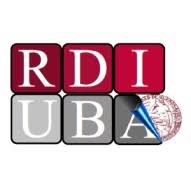Mujer y dictadura. Un ejercicio de Inhumanidad
Resumen
El rol de la mujer en la formación de la fuerza revolucionaria en la Argentina de los 70 puede simbolizarse con los nombres de: Hilda Guerrero de Molina, obrera activista de las movilizaciones azucareras del Ingenio Santa Lucía de Tucumán, que fue una de las primeras víctimas de las balas policiales, que la asesinaron tempranamente, en una movilización el 12 de enero de 1967; Amanda Beatriz Peralta, estudiante avanzada de letras de la UNLP y fundadora de las FAP en 1968 junto con Néstor Verdinelli, su compañero y con Envar El Kadri, y otros diez miembros de la resistencia peronista y, ya avanzada la lucha contra la dictadura de la Revolución Argentina, el 6 de diciembre de 1971, cae Silvia Ana Filler, joven estudiante de arquitectura, en una asamblea estudiantil en la Universidad de Mar del Plata, asesinada por una patota del grupo parapolicial CNU Concentración Nacional Universitaria. Las tres expresan la presencia de la mujer en la fuerza revolucionaria en Argentina, similar a la participación masculina en términos de pasión militante y de iniciativa , aunque numéricamente constituyen sólo el 28% de la fuerza total. El trabajo muestra los datos de edad, de militancia y de nivel educativo, y reconoce los sufrimientos adicionales que padecieron las mujeres en esas luchas, vinculados a su sexo y al machismo repulsivo de los represores, que recientemente ha comenzado a revertirse en la sentencia del Tribunal Oral Federal nº 1 de Mar del Plata que declaró las violaciones de las prisioneras secuestradas como crímenes de lesa humanidad.
Woman and dictatorship. An exercise of humanity
The role of women in the development of the revolutionary force in the Argentina of the 70s can be symbolized with the name of Hilda Guerrero de Molina, an activist workwoman of the sugar factory mobilizations in the Santa Lucía Sugar Plantation of the Tucumán Province. She was one of the first victims of the police bullets that murdered her during a mobilization in January 12, 1967; Amanda Beatriz Peralta was an advanced student of Literature in the National University of La Plata and founder of the FAP (Peronist Armed Forces). In 1968 she was nurdered together with Néstor Verdinelli, her companion, and Envar El Kadri and ten other members of the Peronisr resistance; on December 6, 1971, and as the struggle against the dictatorship of the so-called “Revolución Argentina” was already well-advanced, together with Silvia Ana Filler, a young student of Architectura, fell down during a student meeting in the Mar del Plata University, murdered by a CNU (University National Concentration) parapolice group. These three women convey the presence of woman in the Argentine revolutionary forces, which does not differ at all from masculin participation in terms of activist passion and initiative, although, on a numerical basis, they only amount to a 28% of its total number. This work shows the most relevant data on their age, militancy and educational level and is a recognition of the additional sufferings endured by women during those struggles, relating to their sex and the repulsive male chauvinism of repressors, which recently has started to revert through a judgment by the Nr. 1 Federal Oral Court of Mar del Plata, which declared raping of kidnapped she-prisoners as lese majesty crimes.
Texto completo:
PDFEnlaces refback
- No hay ningún enlace refback.
Estadísticas
Visitas al Resumen:434
PDF:308
Copyright (c)
















